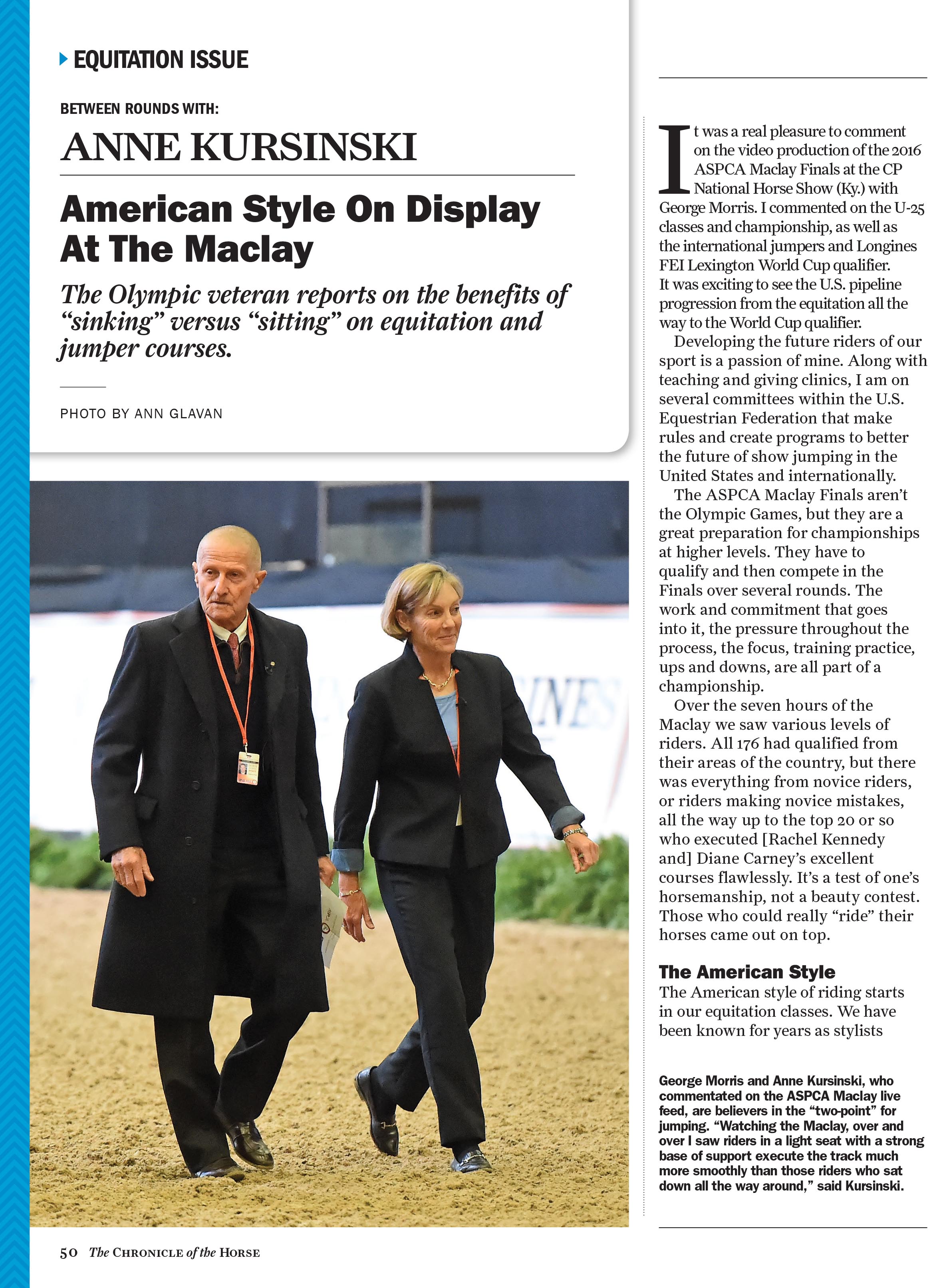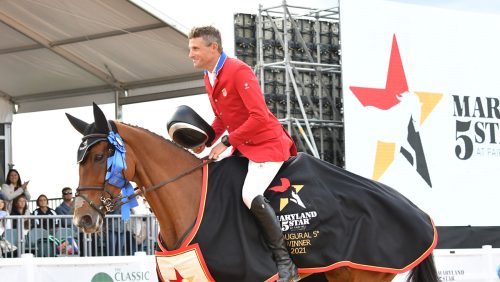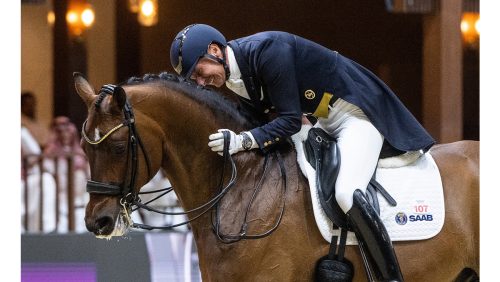It was a real pleasure to comment on the video production of the 2016 ASPCA Maclay Finals at the CP National Horse Show (Ky.) with George Morris. I commented on the U-25 classes and championship, as well as the international jumpers and Longines FEI Lexington World Cup qualifier. It was exciting to see the U.S. pipeline progression from the equitation all the way to the World Cup qualifier.
Developing the future riders of our sport is a passion of mine. Along with teaching and giving clinics, I am on several committees within the U.S. Equestrian Federation that make rules and create programs to better the future of show jumping in the United States and internationally.
The ASPCA Maclay Finals aren’t the Olympic Games, but they are a great preparation for championships at higher levels. They have to qualify and then compete in the Finals over several rounds. The work and commitment that goes into it, the pressure throughout the process, the focus, training practice, ups and downs, are all part of a championship.
Over the seven hours of the Maclay we saw various levels of riders. All 176 had qualified from their areas of the country, but there was everything from novice riders, or riders making novice mistakes, all the way up to the top 20 or so who executed [Rachel Kennedy and] Diane Carney’s excellent courses flawlessly. It’s a test of one’s horsemanship, not a beauty contest. Those who could really “ride” their horses came out on top.
The American Style
The American style of riding starts in our equitation classes. We have been known for years as stylists at the highest level of competition, the Olympic Games, the World Equestrian Games, etc. Form is functional: to be at the right place at the right time on your horse, to make your horse’s job easier. When you are in balance with your horse, with an effective position, you can execute the equitation or jumper courses smoothly and efficiently.
ADVERTISEMENT
The Maclay Finals showed how an excellent and effective position made the courses very doable. George and I are believers in the “two-point” for jumping on hunters, equitation or at the Olympics. Watching the Maclay, over and over I saw riders in a light seat with a strong base of support execute the track much more smoothly than those riders who sat down all the way around. In general, those who sat down didn’t have their horses in front of or honest to their legs. And time and time again, a chip, a stop, lack of steering or an added stride would occur.
George said several times that the two-point is the best galloping and jumping position for the horse, to give the horse’s back freedom and not hurt its back. He said, “There are ‘sitters,’ and there are ‘sinkers. ’ ”
The sinkers are the riders who can, from the two-point, sink into the horse’s back when necessary to support the horse, distance or turn. Also, the forward seat is necessary because the horse’s center of gravity is more forward when he’s galloping. A dressage rider sits on the vertical because the horse is making collection, and his center of gravity is farther back. A jockey on a race horse is up over the horse’s withers and very forward, because the horse’s center of gravity is extremely forward.
Works For Warmbloods Too
There were some comments about how we’re not riding Thoroughbreds in the equitation classes, or in general, much anymore, so a deeper seat is necessary for the warmbloods. I disagree as far as the style to ride the warmbloods because I’ve ridden all my horses in two-point contact. Eros is a Thoroughbred. Starman was a German stallion. Nick Skelton, the Olympic gold medalist this year in Rio, never sits down, and his mount is a warmblood stallion.
It is the correct training of horse and rider. The horses must be responsive to the riders’ legs first. Many are not truly trained to move off the leg. Then the riders feel they must sit to push the horse, because of their lack of reaction to the legs. I have also seen riders sit due to lack of balance and strength in their legs, core and low back. The riders need to be fit, strong and athletic on the horse’s back. Many are heavy, rather weak and lazy riders, generally riding “behind” the motion rather than “with” the motion.
ADVERTISEMENT
This is an excerpt from the Between Rounds column “American Style On Display At The Maclay” by Anne Kursinski, which appears in the Dec. 19 Equitation Issue of The Chronicle of the Horse. If you’d like to read the article in its entirety, you can subscribe and get online access to a digital version and then enjoy a year of The Chronicle of the Horse and our lifestyle publication Untacked. Or you can purchase a single issue or subscribe on a mobile device through our app The Chronicle of the Horse LLC.
If you’re just following COTH online, you’re missing so much great unique content. Each print issue of the Chronicle is full of in-depth competition news, fascinating features, probing looks at issues within the sports of hunter/jumper, eventing and dressage, and stunning photography.
See the entire current issue’s table of contents.

What are you missing if you don’t subscribe?















